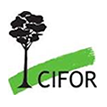SO WHAT’S THE PROBLEM?
A major reason for this lack of success is that prevailing policy frameworks still favor classic development approaches, oriented toward economic actors with the capital and capacity required to implement input-intensive, mechanized schemes for agroindustrial production, forest management, the exploitation of minerals and fossil fuels, and the generation of hydroenergy. Meanwhile, the capacity of smallholders to contribute to sound local development is widely ignored — surprisingly, even by those organizations explicitly working for and with local people.
Our findings suggest that the highly diverse socio-productive systems managed by Amazonian families do in fact have the potential to contribute to robust local development within environmentally stable landscapes, particularly when compared to other economic actors.
Local potential depends on the size and quality of land and resources, access to public services and markets providing fair prices, and the degree of social organization. Tapping this potential requires effective protection for local smallholders from economic actors who use their competitive advantage to access and exploit land and resources for the benefits of prospering urban centers and high-income countries.
Shifting the perspective on smallholders — from seeing them as an obstacle to seeing them as a solution for sound rural development — provides new opportunities for action. However, such a shift requires rethinking current visions, concepts and operational modes.
Instead of further investing in adapting smallholders to the conditions of a globalized economy, it is necessary to consider possibility of adapting conditions to their capacities and interests. To reach this ideal, more aggressive policies are needed that reward the socio-environmental activities of smallholders and, consequently, constrain the influence of non-local commercial actors in the land and resources of the region. Paternalistic structures and political favoritism prevailing in many Amazonian countries, as well as relevant international processes and governance mechanisms, need to be overcome.
Considering the serious implications of such a smallholder-oriented approach to rural development, massive opposition is to be expected from those groups that benefit from the current situation. The magnitude of the challenge can be guessed by viewing the desperate battle of indigenous groups and social movements to get their rights to land and resources recognized.
It might be a good idea to start by exploring the possibilities that everyone — researchers, politicians, development agencies, entrepreneurs, citizens and smallholders — has to make this shift, and what realistic options exist for action within the specific personal field of action of each.
There is a great deal of pressure and very little time.
Copyright policy:We want you to share Forests News content, which is licensed under Creative Commons
Attribution-NonCommercial-ShareAlike 4.0 International (CC BY-NC-SA 4.0). This means you are free to redistribute our material for non-commercial purposes. All we ask is that you give Forests News appropriate credit and link to the original Forests News content, indicate if changes were made, and distribute your contributions under the same Creative Commons license. You must notify Forests News if you repost, reprint or reuse our materials by contacting
forestsnews@cifor-icraf.org.













